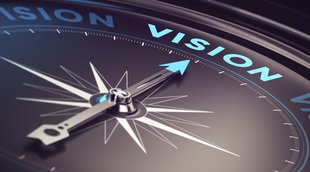|
By Howard Stanten MPT, CPCC  Steven M. R. Covey’s book, “The Speed of Trust,” is a timeless gem for anyone working in or with organizations seeking to get more sustainable results. The very bottom line premise is that improving trust significantly leverages the efficiency of everything else you do. High trust cultures produce a “trust dividend” and low trust cultures produce a “trust tax.” The same can be said for “Vision.” Vision paints a crystal-clear picture of why your organization exists. At its most powerful, a vision statement is an inspirational calling forth of the best an organization has to offer the world. And, as I look around, I see many organizations busy with the execution of strategy geared to the achievement of short term goals, at best, and more often, the quenching of the fires of the day. A powerful question I often ask my leadership client’s is, “To what end?” This often results in silence. A slowing down. And, this is a good thing. Sure, organizations can get things done and be profitable with only lip service to vision. Just know, there is a cost, a tax, to this approach. If we don’t seek to connect to our vision daily, we lose sight of what is important, what really matters. This often results in wasted time and resources. Worse yet, if we don’t have a vision, we are likely to come up for air someday, exhausted and burned out, asking the question “How did we get HERE?” and “WHERE are we, anyway?” Connection to a crystal-clear vision lit up by the lights of passion and purpose, produces a dividend. Our vision is our guide-post that helps us determine what’s important and how best to spend our time and resources. When we are clear about where we are going, what we want to be, and the impact we want to have, we have the potential to transform from simply getting things done and maybe being profitable to being wildly successful. Dare I say, to “living the dream!” In addition to Covey’s “Economics of Trust,” I propose an “Economics of Vision.” Substituting “Vision” for “Trust” in Covey’s model: Decreased Vision = Decreased Speed and Increased Cost Increased Vision = Increased Speed and Decreased Cost Similarly, in Covey’s formula for organizational success I substitute “Vision” for “Trust.” (Strategy x Execution) Vision = Results. Consistent connection to a meaningful vision produces a “vision-dividend” that serves to multiply results. Disregard to vision produces a “vision-tax” that serves to discount results. As leaders, we frequently don’t know the “perfect” next step. All success stories include chapters of “failed” steps taken. Connecting to a crystal-clear vision lets us know whether the strategies and tactics we are following are “succeeding” or “failing.” Is this strategy getting us closer to our vision? Yes. Carry on! No. Change direction. Vision paves the way to using limited resources more efficiently. And, gives us a reason to keep going when the inevitable roadblocks rise to get in our way. At Vanguard Coaching, we asked ourselves the question, “To What End?” We knew our work was driven by our experience that there are many good folks doing good work despite their organizations. We then asked, “What if leadership in organizations worked to leverage the wisdom of their people instead of working against them?” Out of the silence (and some not so silent rigorous conversation) our vision emerged: “High-Trust organizational cultures producing better results and better lives for every stakeholder.” “To what end?” are you leading your organization? What’s your vision?
1 Comment
|
AuthorHoward Stanten MPT,CPCC is an Executive Leadership and Professional CategoriesArchives
June 2019
Categories |
 RSS Feed
RSS Feed